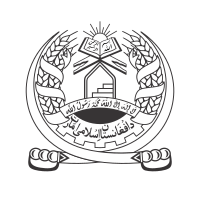Our website is made possible by displaying online advertisements to our visitors.
Please consider supporting us by disabling your ad blocker.
Afghan Air Force
| General Command of the Air Force | |
|---|---|
| د هوايي ځواک عمومي قومندان (Pashto) فرماندهی کل نیروی هوایی (Dari) | |
 The emblem of the Islamic Emirate of Afghanistan adopted by the Taliban | |
| Founded | 1921[1] |
| Country | Afghanistan |
| Type | Air force |
| Role | Aerial warfare |
| Part of | Afghan Armed Forces |
| Headquarters | Kabul |
| Engagements | List of wars involving Afghanistan |
| Commanders | |
| Commander-in-Chief of the Air Force | Amanuddin Mansoor |
| Notable commanders | Colonel General Abdul Qadir Lieutenant General Abdul Fahim Ramin[2] |
| Insignia | |
| Roundel (limited usage) |  |
| Fin flash[3] |  |
| Aircraft flown | |
| Attack helicopter | Mil Mi-24, McDonnell Douglas MD 500 Defender |
| Utility helicopter | Mil Mi-8, Sikorsky UH-60 Black Hawk |
| Trainer | Aero L-39 Albatros |
| Transport | Antonov An-26, Antonov An-32, Cessna 208 Caravan |
The General Command of the Air Force (Pashto: د هوايي ځواک عمومي قومندان, Dari: فرماندهی کل نیروی هوایی)[4] also referred to as the Islamic Emirate Air Force and the Afghan Air Force, is the air force branch of the Afghan Armed Forces.[5]
The Royal Afghan Air Force was established in 1921 under the reign of King Amanullah and significantly modernized by King Zahir Shah in the 1960s. During the 1980s, the Soviet Union built up the Afghan Air Force, first in an attempt to defeat the mujahideen and in hopes that strong Afghan airpower would preserve the pro-Soviet government of Mohammad Najibullah. When Najibullah eventually fell in 1992 the Afghan Air Force may have counted 350 aircraft.[6] The collapse of Najibullah's government in 1992 and the continuation of a civil war throughout the 1990s reduced the number of Afghan aircraft to some 35–40.[7] During Operation Enduring Freedom in late 2001, in which the Taliban government was ousted from power, all that remained of the AAF was a few helicopters.
In 2006, the Afghan National Army Air Corps was established, and was renamed the Afghan Air Force in 2010 while remaining part of the Afghan National Army.[8][9] Since 2007, the U.S.-led Combined Air Power Transition Force, renamed the NATO Air Training Command-Afghanistan in 2010, aimed to rebuild and modernize the Afghan Air Force.[10] It served as the air component of the NATO Combined Security Transition Command-Afghanistan which was responsible for organising the Afghan Armed Forces.[11] The AAF possessed 161 aircraft in 2021 and had in 2020 over 7,500 personnel.[12][13] The Resolute Support Mission intended to raise the ranks of the AAF to 8,000 airmen and increase the number of aircraft, which were progressively getting more advanced.[14]
Following the withdrawal of NATO forces in the summer of 2021, in addition to a large-scale offensive by the Taliban, the mostly non-functional Air Force largely disintegrated. This culminated in the Fall of Kabul and President Ashraf Ghani fleeing to the United Arab Emirates. Large numbers of airmen either fled the country or stood down in the face of the Taliban, with many fixed and rotary-wing aircraft being destroyed or captured by the Taliban. Many other fixed and rotary-wing aircraft had flown to neighboring countries. It was reported that 46 aircraft (22 fixed-wing and 24 helicopters) have so far ended up at Termez Airport in Uzbekistan.[15] After the takeover, Taliban expressed their intention to rebuild the Afghan Air Force and had called on US-trained Afghan pilots to return to Afghanistan.[16]
- ^ "Birth_of_the_Air_Force_in_Afghanistan". chezpeps.free.fr.
- ^ "U.S. Builds Afghan Air Base, but Where Are the Planes?". The Wall Street Journal. 24 July 2012. Archived from the original on 12 November 2017. Retrieved 3 August 2017.
- ^ "one-year-on-taliban-air-force". oryxspioenkop.com. Retrieved 12 December 2023.
- ^ khan, zahir (16 November 2022). "Air Force General Command Repairs 35 MI Helicopter". Islamic Emirate of Afghanistan, Исламский Эмират Афганистан. Retrieved 8 December 2023.
- ^ "Falling down". flightglobal.com. Retrieved 2 December 2021.
- ^ Marion 2010, p. 25.
- ^ Giustozzi 2016, p. 118.
- ^ Inspector General 2012, p. i.
- ^ United States. Department of Defense 2010, p. 31.
- ^ Quillen, David (18 September 2010). "U.S. Air Forces Central Command". Archived from the original on 28 May 2014. Retrieved 24 March 2015.
- ^ Cooper, Tom. "Welcome to the Air Combat Information Group". 1map.com. Archived from the original on 7 June 2011.
- ^ Special Inspector General for Afghanistan Reconstruction 2021, p. 76.
- ^ Special Inspector General for Afghanistan Reconstruction 2022, p. 4.
- ^ Kuz, Martin. "Sprawling air base in western Afghanistan reflects hopes, perils of massive buildup". Stripes. Archived from the original on 19 June 2012. Retrieved 28 April 2012.
- ^ Trevithick, Joseph. "Dozens Of U.S.-Bought Afghan Air Force Aircraft Are Now Orphaned At An Uzbek Airfield". The Drive. Retrieved 18 August 2021.
- ^ Cite error: The named reference
rebuildwas invoked but never defined (see the help page).
Previous Page Next Page


